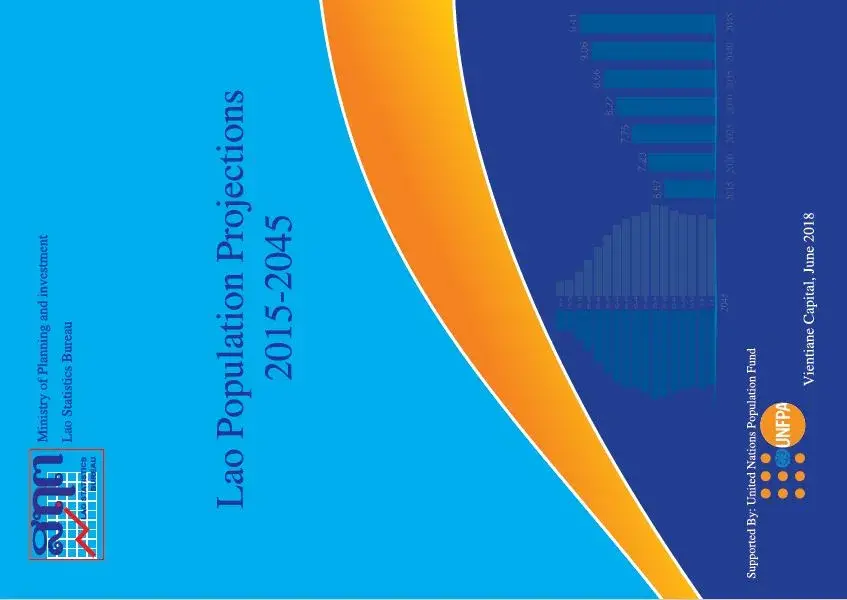Population projections are extremely important for effective management and administration of population growth and related demographic issues. If population projections are as accurate as possible, the government and policymakers will be able to inform and formulate policies and development plans with greater precision, in order to respond with necessary and effective population services such as social services and social welfare. Due to this importance and necessity the Lao Statistics Bureau, under the Ministry of Planning and Investment, has conducted this population projection by utilizing the baseline data from the fourth Population and Housing Census in 2015.
Population projections can be calculated using different methods. This population projection is based on estimations of population indicators such as fertility, mortality and migration rates. These indicators are some of the most utilised when looking at factors that change population dynamics in the future. However using such indicators for population projections cannot fully predict accurate population changes because there are numerous other, sometimes unpredictable, factors that may affect these changes.
Population projections demonstrate a calculation of the population's size and characteristics in the future. It is not possible to guarantee a hundred percent accurate estimation, even if the best available methodology was utilised in the estimation. Therefore, it is necessary for Lao Statistics Bureau to improve the population projection periodically in order to obtain a more accurate picture of the population in the future, which is estimated using data from several sampling surveys such as Lao Social indicator Survey and other surveys.
Finally, we hope that the report will serve as a useful source of information and data for policymakers at all central and local levels, and that general use of this population projection will be to formulate plans and periodically monitor the social-economic develop plan to improve the population's facilities and welfare of all population groups including ethnic groups in the whole country.


